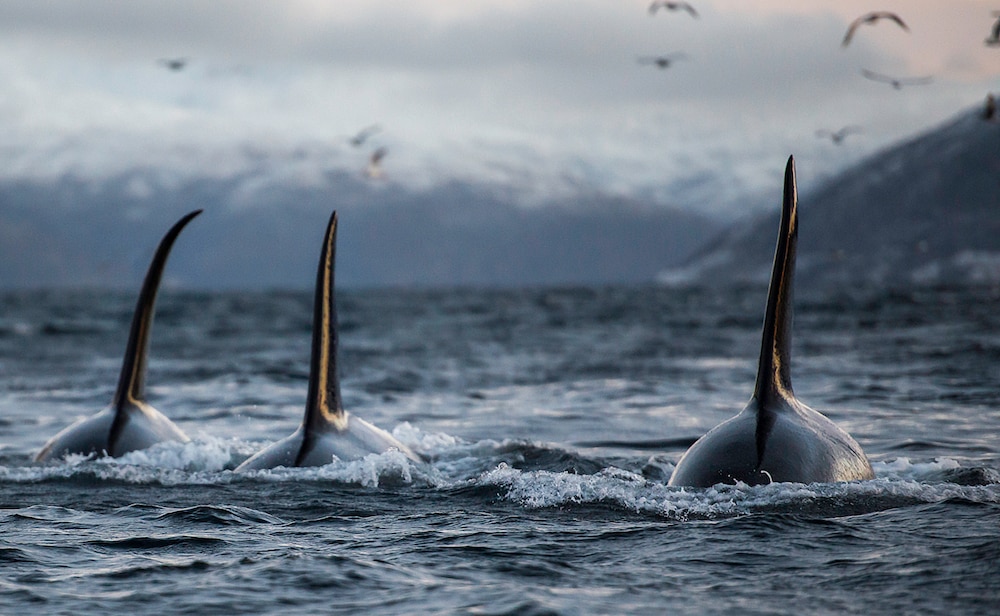Create a free profile to get unlimited access to exclusive videos, sweepstakes, and more!
Orca-nized crime is on the rise as killer whales teach one another to steal fish
They're basically roving groups of pirates, only they don't need boats.

Populations of orcas, popularly known as killer whales, swimming around the Crozet Islands are in decline. Due at least in part to illegal fishing practices carried out in the area throughout the 1990s, much of the population was killed and they have yet to recover. Moreover, prey animals might have become scarce, and the orcas are struggling to maintain a foothold in their ecosystem.
Consequently, orca populations in the area have undergone a behavioral shift in the ways they hunt over recent decades. As Aladdin famously sang in the 1992 Disney film bearing his name, you gotta eat to live, and sometimes you’ve gotta steal to eat. At least that’s what seems to be happening in the waters around Crozet.
Morgane Amelot and Paul Tixier are scientists working with the Center for Biological Studies of Chizé, in collaboration with Australia’s Deakin University, to study the hunting behaviors of sub-Antarctic killer whale populations. Their findings were published in Biology Letters.
“At Crozet, killer whales are observed feeding on toothfish caught on longlines on about 40% of fishing operations,” Tixier told SYFY WIRE.
Using longlines are common fishing practice in the area. They work by dropping kilometers of fishing line into the water, dotted with thousands of baited hooks. Those lines are then left for extended periods and eventually hauled up.
Scientists believe the orcas likely know where the boats will be, because fishing operations tend to visit roughly the same areas over time, and the longlines represent an abundance of easy prey.
“It might be interesting for killer whales to feed on longlines because the cost is lower than when they have to hunt. They are resources which are predictable in time and space” Amelot told SYFY WIRE. “Longline fishing allows killer whales to access this highly energetic fish with limited foraging and diving efforts,” Tixier added.
The fact that killer whales are essentially stealing fish from longlines, as an alternate feeding strategy to hunting, is interesting on its own, but more exciting is that the behavior is increasing. Understanding the behavior of individuals in an aquatic ecosystem is often difficult but orcas make the process a little easier by way of their patterning.
Individual whales have unique surface patterns, making it possible to identify them within a group. Using that information, scientists were able to quantify the number of orcas engaging in raiding strategies over time. Over the last decade or so, the number has nearly tripled and now represents a majority of the population. This increase in raiding activities lines up nicely with behavioral spread known as horizontal transmission — learned behaviors which travel between individuals within the same generation.
“Horizontal transmission is typically characterized by a starting phase with only a few individuals which have acquired the behavior, an acceleration phase where individuals show it to others in the population, and finally a plateau phase, when all the individuals who are able to acquire the behavior do. Then the spread stops,” Amelot said.
Of the two groups of orcas living in the area, it’s believed that both have reached that plateau. As such, levels of thievery among killer whales aren’t expected to increase until and unless the population also increases.
That’s something that conservationists are sorely hoping for. At present, there’s no indication that the population is growing. In fact, it’s in decline, and their propensity for feeding at fisheries might be a contributing factor.
“It can involve a high level of risk for the whales. They do not get entangled in fishing gear but may be exposed to illegal fishers using lethal practices, firearms or explosives, to repel the whales. These practices were commonly used in the 1990s and may still be used by illegal vessels,” Tixier said.
The French government has implemented strict guidelines and observation strategies to try and mitigate the environmental risks to killer whales resulting from fisheries, and conservationists are cautiously hopeful they might recover.
In the meantime, if you see a killer whale stealing some fish, no you didn’t. At this point, we probably owe them a few free meals.


























